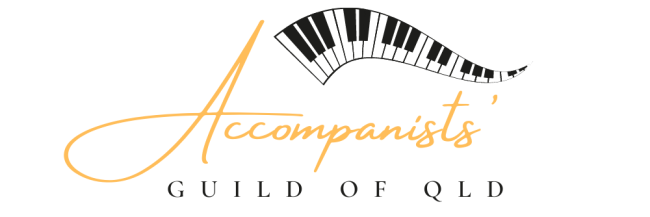SOME TIPS FOR PIANO ACCOMPANISTS
By STEPHEN CHIN
• Always attempt to get your music well ahead of time. Reference to a recording can be most helpful.
• Development of good sight reading skills is extremely important yet fun!
• Do lots of “easy” pieces when starting out to boost your confidence.
• Check bars numbers, rehearsal figures and repeats – they can vary between editions
• Never be afraid to edit. Accompaniments fit roughly into three categories – good, difficult and impossible.
• Try to devise musical cuts for long introductions or interludes. Be sure that the phrasing and harmony makes sense.
• Maintain good eye contact with your associate artist.
• If your associate artist gets lost, try to play their line with your bass line part until a recovery is made.
• If YOU get lost, try to maintain one hand – usually the bass line.
• Always follow the solo part and be as familiar with it as you can.
• Endeavour to match phrasing where possible.
• Be wary of fluctuating rhythms – easier sections for the solo part tend to rush and more difficult ones can slow down considerably.
• From time to time, it may be beneficial for you to help your associate artist pitch their notes. This can take time but must not dominate the rehearsal.
• Practise faster pieces faster than the required tempo just in case your associate artist wishes to go at a brighter pace.
• Be prepared for bars, lines or even pages that are skipped.
• Read at least one bar ahead – the more the merrier!
• It is important to note that instrumentalists especially string players use a different tuning system to the piano’s equal temperament tuning. The lowest string on an instrument will usually have to be sharpened a little.
• A D Minor chord is standard for an instrumentalist to tune to. However, violins and basses may tune to a DEGA cluster, whilst cellists and violists may like a CDGA cluster.
• Dynamics must be carefully observed but be aware of tonal balance at all times. For instance a piece may be marked forte in both parts but if you are accompanying an eighth size violin, adjustments obviously have to be made.
• Page turns need to be addressed – it is fine to make a copy of a page if the turn is difficult. There are some electronic tablets that can display an image by tapping the foot on a pedal.
• Try to develop good transposition skills. Often singers like to try pieces in different keys. Baroque instrumentalists will usually play down a semitone.
• Beginnings and endings of pieces need to be thoroughly rehearsed.
• Regular practise with a metronome is essential. The keyboard part is like the foundations of a building and needs to be solidly supportive.
• Familiarise yourself with a wide range of styles – e.g. Contrapuntal, Rock, Latin, Jazz, etc
• Observe proper etiquette – your associate artist should acknowledge you and the conclusion of a work. If you are playing a sonata with musically equal parts, then you should take a bow together.
PRINT – SOME TIPS FOR PIANO ACCOMPANISTS – By Mr Stephen Chin

